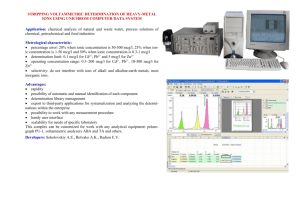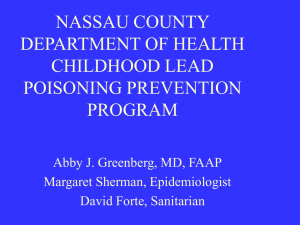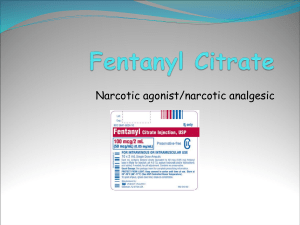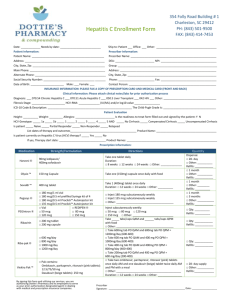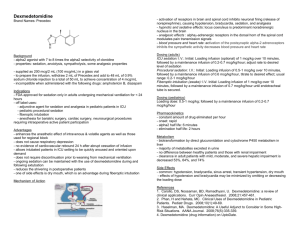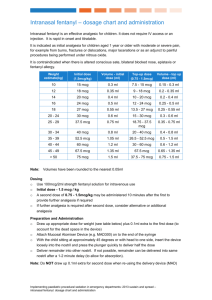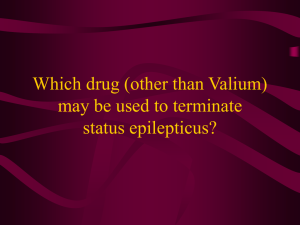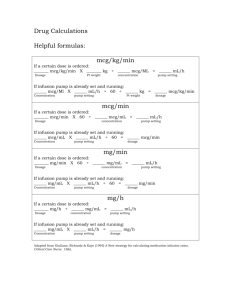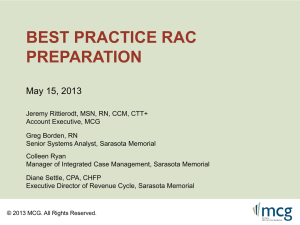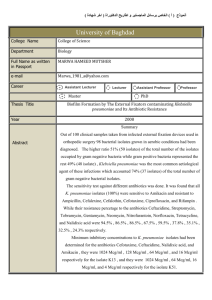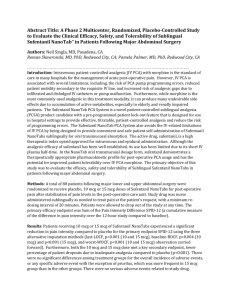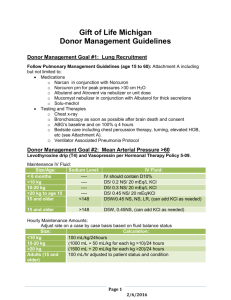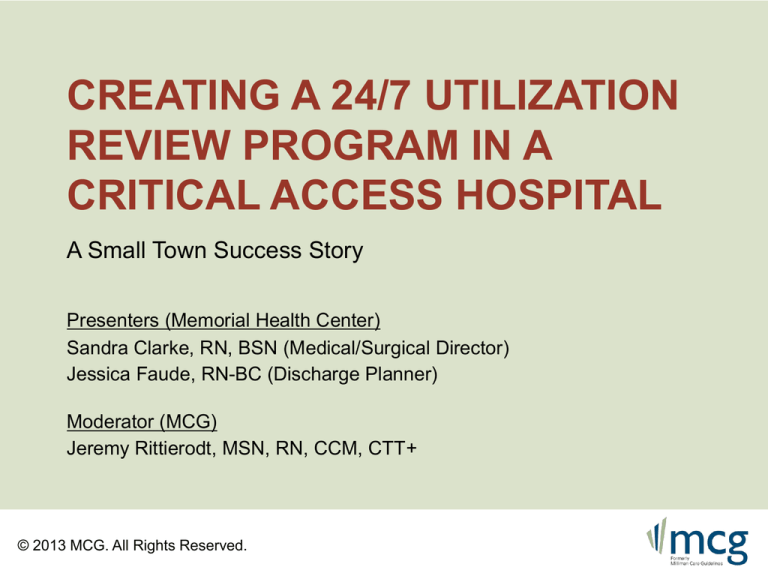
CREATING A 24/7 UTILIZATION
REVIEW PROGRAM IN A
CRITICAL ACCESS HOSPITAL
A Small Town Success Story
Presenters (Memorial Health Center)
Sandra Clarke, RN, BSN (Medical/Surgical Director)
Jessica Faude, RN-BC (Discharge Planner)
Moderator (MCG)
Jeremy Rittierodt, MSN, RN, CCM, CTT+
© 2013 MCG. All Rights Reserved.
The Big Picture: Rural Health
The challenges were:
• Competition from larger bed/higher acuity facilities
• Attracting patients who are established at larger
facilities
• Attracting and retaining providers
• Limited resources
• Constant battle against thin financial margins
2
© 2013 MCG. All Rights Reserved.
The Big Picture: Rural Health (continued)
The Advantages
• Personalized care: We know our patients
• Smoother transitions for change
– Ideas easily escalated to senior leadership
– Can make changes quickly
3
© 2013 MCG. All Rights Reserved.
Memorial Health Center
• Level III trauma care and Critical Access Hospital in
northern Wisconsin
• Celebrated 50 years of service in 2012
• Partnered with Aspirus, Inc in 2001
• Embarked on Journey of Excellence in 2008
4
© 2013 MCG. All Rights Reserved.
Memorial Health Center (continued)
•
•
•
•
•
•
•
•
•
•
5
Not-for-profit, Primary Care Hospital
5 Primary Clinics
Specialty Clinics
Pharmacy
Therapy Centers
Public Fitness Center
Skilled Nursing Facility
Swing Bed Program
Assisted Living Facility
Senior Income Eligible Apartments
© 2013 MCG. All Rights Reserved.
Memorial Health Center: Challenges
Effects and causes
• Inaccurate status determinations
• Patient dissatisfaction: Delays, financial impact of
inaccurate status determinations
• Staff stressed: Monday & early morning UR backlog,
struggling with medical necessity and required
documentation
• Providers frustrated: Poor coordination, lack of
structured process
• 30-day readmissions at 9.1%
• Financial challenges: Reimbursement rates
6
© 2013 MCG. All Rights Reserved.
Criteria for a Potential Solution
Needed a program that would impact:
• Patient care and safety
• Patient, provider, and staff satisfaction
• Financial standing
Chose Web-based acute care guidelines from MCG:
• Inpatient & Surgical Care
• General Recovery Care
7
© 2013 MCG. All Rights Reserved.
Pre-Development Steps
• Early buy-in from senior leadership
• Began trial process in May 2011: UR RN notified of
all admissions during office hours
• Began to manually track inappropriate admissions,
inappropriate status, and changed status
• Trialed a binder with common care guidelines for ED
physicians
8
© 2013 MCG. All Rights Reserved.
Planning Stage
• Needed an improved process to cover 24/7
utilization review
• Developed a policy and procedure defining process
• Utilization Review Committee approval
• Education provided to ED committee and medical
staff and subsequent approval of new process
• Education provided to departments and staff
9
© 2013 MCG. All Rights Reserved.
Potential Obstacles: Budget & Staffing
• Smart phones with 24/7 access to the care guidelines
• On call compensation
• Physician advisor role
Lesson
Early buy-in from senior leadership pays off
10
© 2013 MCG. All Rights Reserved.
Implementation
24/7 utilization review program initiated
(September 19, 2011)
1. UR nurse contacted (all admissions)
2. UR nurse determines appropriate admission status
using care guidelines that can be accessed on the
smart phone
11
© 2013 MCG. All Rights Reserved.
Implementation (continued)
3. Admitting provider and UR/charge
nurse sign MHC Utilization Review
Admission Determination with
appropriate status checked
4. Relevant care guideline printed and
placed – with criteria highlighted – in
medical chart under Physician
Orders
5. Daily review documentation and
notes written directly on printed
guideline
12
© 2013 MCG. All Rights Reserved.
Outcomes: Before and After
Remember those challenges?
•
Inaccurate status determinations
– More accurate admissions
– 30-day readmission rate reduced from 9.1% to 5.6%
– Quality Measure benchmarking
• Patient dissatisfaction
– Patient satisfaction scores rose sharply
13
© 2013 MCG. All Rights Reserved.
Outcomes: Before and After
Remember those challenges?
• Inaccurate status determinations
– More accurate admissions
– 30-day readmission rate reduced from 9.1% to 5.6%
– Quality Measure benchmarking
• Patient dissatisfaction
– Patient satisfaction scores rose sharply
14
© 2013 MCG. All Rights Reserved.
Outcomes: Before and After (continued)
Remember those challenges?
• Staff stressed
– Smart phones support flexible hours, happier UR nurses
– Increased sense of teamwork
– Time savings across departments (medical records,
registration, coding, billing)
• Providers frustrated
– Greater sense of trust among providers
– Proactive referrals for therapies, skilled nursing facility
placements or home health during the admission process
• Financial challenges
– Billable observation hour reimbursement increased
$226,666 or 64%
15
© 2013 MCG. All Rights Reserved.
Outcomes: Before and After (continued)
Remember those challenges?
• Staff stressed
– Smart phones support flexible hours, satisfied UR nurses
– Increased sense of teamwork
– Time savings across departments (medical records,
registration, coding, billing)
• Providers frustrated
– Greater sense of trust among providers
– Proactive referrals for therapies, skilled nursing facility
placements or home health during the admission process
• Financial challenges
– Billable observation hour reimbursement increased
$226,666 or 64%
16
© 2013 MCG. All Rights Reserved.
Driving Effective Care
Evidence-based
guideline at
provider’s fingertips
for all admissions
Documentation wins
Faster insurance and
clinical reviews
17
© 2013 MCG. All Rights Reserved.
Care plan preparation
Overall, streamlined
process from
admission to
discharge
Questions? Please contact us.
• Jessica Faude, RN-BC Jessica.Faude@aspirus.org
• Sandra Clarke, RN, BSN clarkes@aspirus.org
• Jeremy Rittierodt, MSN, RN, CCM, CTT+
jeremy.rittierodt@careguidelines.com
Memorial Health Center www.memhc.org
MCG www.careguidelines.com
Doyle Award careguidelines.com/content/doyle-award
18
© 2013 MCG. All Rights Reserved.

